Frost Protection - UTL Repository
Frost Protection - UTL Repository
Frost Protection - UTL Repository
Create successful ePaper yourself
Turn your PDF publications into a flip-book with our unique Google optimized e-Paper software.
]<br />
F R O S T P R O T E C T I O N : F U N D A M E N T A L S , P R A C T I C E A N D E C O N O M I C S<br />
[<br />
an expected frost night, the wind machines (and heaters) should be started earlier<br />
to attempt to dry the fruit before ice can form on the fruit. Wind machines are not<br />
recommended when the wind is blowing at more than about 2.5 m s -1 (8 km h -1 )<br />
or when there is supercooled fog. When the wind is more than 2.5 m s -1 , it is<br />
unlikely that an inversion is present and it is possible that the fan blades could<br />
experience wind damage. A simple method to estimate the wind speed is to hang<br />
plastic ribbon from a tree branch or street sign. Police crime scene tape is an<br />
example of the type of plastic ribbon that could be used. Such ribbon can be<br />
purchased from farm or engineering supply stores. If the wind is greater than<br />
2.5 m s -1 , the bottom of the hanging ribbon should be blowing back and forth to<br />
about 30 cm from horizontal.<br />
In a supercooled fog, water droplets can freeze on the fan and severe wind<br />
machine damage can occur if the ice cases one blade to break off but not the other.<br />
Vertical flow wind machines<br />
The use of vertical flow fans to pull down the warm air aloft has been<br />
investigated; however, these fans generally work poorly because mechanical<br />
turbulence mixing with the trees reduces the area affected by the ventilation.<br />
Also, the high wind speed near the base of the tower can damage horticultural<br />
and ornamental crops. Wind machines that blow vertically upwards are<br />
commercially available and there has been some testing of the machines. The idea<br />
is that the fan will pull in cold dense air near the ground and blow it upwards<br />
where it can mix with warmer air aloft. In theory, cold air is removed near the<br />
surface and the warmer air aloft drops downward hence lowering the inversion.<br />
Limited testing has shown that this method has a temporary positive effect on<br />
temperatures near the fan; however, the extent of influence and duration of the<br />
effect is still unknown.<br />
To our knowledge, the method has only been used in small valleys where cold<br />
air ejected upwards is likely to fall back towards the surface. In a location where<br />
prevailing winds aloft might move the air horizontally away from the crop,<br />
more protection could result. However, there is no known research evidence at<br />
this time.<br />
Helicopters<br />
Helicopters move warm air from aloft in an inversion to the surface. If there is<br />
little or no inversion, helicopters are ineffective. Due to the large standby and<br />
operational costs, the use of helicopters for frost protection is limited to high<br />
value crops or emergencies (e.g. when the normal method breaks down).<br />
160


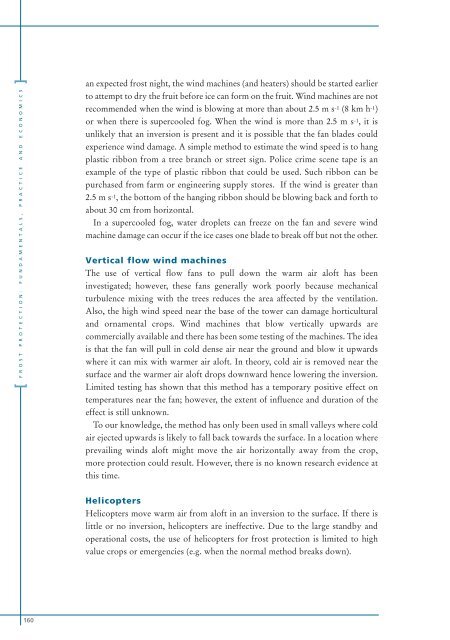
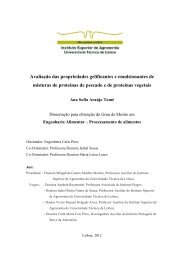
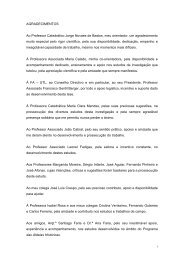

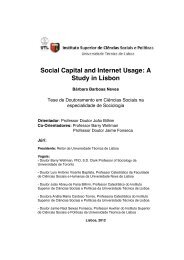
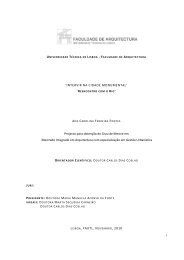
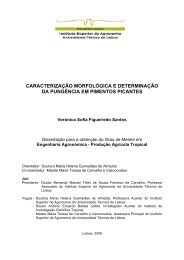

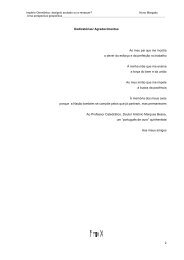

![Tese - Es..[1].pdf - UTL Repository - Universidade Técnica de Lisboa](https://img.yumpu.com/25707135/1/184x260/tese-es1pdf-utl-repository-universidade-taccnica-de-lisboa.jpg?quality=85)


